- Home / Catalog / Professional Skincare / Numbing Creams
Topical Numbing Creams
Nothing found
TOPICAL LIDOCAINE CREAMS
What is Lidocaine?
Lidocaine is a preferred numbing medicine among medical professionals for assisting patients in lowering pain and discomfort caused by a variety of health-related issues ranging from skin irritation to invasive and extensive medical procedures.
Lidocaine Cream Ingredients
A pharmaceutically made lidocaine cream typically comprises 30 milligrams (3 percent) of lidocaine hydrochloride USP per milliliter. Cetyl Alcohol, Calcium Acetate, Methylparaben, Aluminum Sulfate, Mineral Oil, Polysorbate 80, Petrolatum, Propylparaben, Purified Water, Propylene Glycol, Sodium Hydroxide, Stearic Acid, Stearyl Alcohol, and Sorbitan Monostearate are among the inactive components.
How long does Lidocaine cream last?
The secret to getting the most out of lidocaine cream is to apply it correctly. Apply the lotion to the affected region (do not put it on cuts or grazes, or the damaged skin) and leave it to work for around 30 minutes. For an hour, the skin and surrounding tissue will be numb. Even after it is removed, the cream continues to work for another hour.
Lidocaine cream alternatives
Doctors often employ US FDA-approved local anesthetics for numbing and pain management. Many of them are also available for home usage in over-the-counter (OTC) strength, to include lidocaine cream (in the brands Dermoplast, LidoRx, Lidoderm). Other medicinal alternatives include:
- benzocaine (Solarcaine, Dermoplast, Lanacane)
- pramoxine (Sarna Sensitive, Proctofoam, Prax)
- dibucaine (Nupercainal, Rectacaine)
- tetracaine (Ametop Gel, Pontocaine, Viractin)
Concerned about lidocaine cream and other medication’s potential risks? Try these alternative natural products and home remedies for numbing skin. For the purposes of this blog, the following pain-relieving and pain-prevention remedies are introduced:
- Ice. Minor injuries, sunburn, and other ailments can be relieved with an ice pack or cold compress. Ice may also be used to numb your skin before a surgery like an ear piercing.
- Patting. Sharply patting your skin a few times can also provide a temporary numbing sensation.
- Aloe vera. Skin discomforts such as sunburn and other skin ailments can be treated using the gel made from aloe vera leaves.
- Clove essential oil. Early study suggests that it can operate on the skin similarly to benzocaine and can be administered to the skin as a pain counterirritant.
- Plantain. Plantain — the weed, not the fruit — may be used to make a fresh poultice that can help reduce inflammation while also calming the skin.
- Chamomile. Chamomile essential oils successfully penetrate through the skin's surface into the deeper layers as a topical anti-inflammatory treatment, according to a Trusted Source research published in 2010.
What are you going to do now? You have natural and medicinal choices for numbing your skin, whether it's to relieve pain or prepare for discomfort. Nevertheless, consult your doctor before taking any numbing medication to explore the risks and best alternatives for your specific circumstances.
How long does Lidocaine cream take to work?
Lidocaine is a fast-acting skin lotion that takes 30 to 60 minutes to work. The cream must be used only on healthy skin. It should not be used to cuts or grazes. Itching and tingling are the most typical adverse effects. Until the numbing effect has worn off, avoid scratching or rubbing the treated area of skin, as well as exposing it to intense heat or cold.
Why would Lidocaine not work?
In general, local anesthesia fails in ten (10) percent of inferior alveolar nerve block cases and seven (7) percent of all instances of local anesthetic in general practice. Infection, incorrect selection of local anesthetic solution, technical errors, anatomical differences with supplementary innervation, and patient anxiety are all possible reasons of failure. Defective medication and scorpion bites are two other probable causes of failure to produce anesthesia following local anesthetic injection.
What are the possible side effects of Lidocaine cream?
In addition to its intended effects, a medicine may have some unfavorable side effects. Although not all of these side effects are expected to occur, medical attention may be necessary if they do. Lidocaine cream, like any other medical medication, has the potential to cause negative effects.
If a patient has any of the following adverse effects when using lidocaine topical, he or she should contact their doctor right once.
The following are rare side effects:
- Skin reddening, blistering, crusting, irritation, itching, or blistering
- Cough
- skin that is cracked, dry, or scaly
- rapid heart rate
- fever
- hives or welts, itching, or a rash on the skin
- hoarsens
- irritation
- Swelling, stiffness, or discomfort in the joints
- hive-like enlargement of the face, eyelids, lips, tongue, throat, hands, legs, feet, or genitals
- squeaky breathing
- eyes, cheeks, lips, hands, or feet swelling
- a feeling of heaviness or discomfort in the chest
- breathing or swallowing difficulties
There have also been unreported cases of the following negative effects occurring after using lidocaine cream:
- swelling, blistering, bruising, burning, discoloration, itching, redness, or blistering at the application site.
- lips, fingernails, or palms that are blue in hue
- dilated pupils
- soreness or pain in the chest
- skin that is chilly, clammy, or pale
- confusion
- urine that is dark in color
- lightheadedness, dizziness, or faintness after rapidly rising from a sleeping or sitting posture
- sleepiness or vertigo
- a fictitious or erroneous sensation of well-being
- nervousness or apprehension
- headache
- breathing that is uneven, quick or slow, or shallow
- inability to function
- no pulse or blood pressure
- lips, fingernails, or skin that are pale or blue
- puffiness or swelling of the eyelids, cheeks, the lips, or the tongue
- a fast heart rate
- seizures
- tremors in the legs, arms, hands, and feet
- a heartbeat that is sluggish or irregular
- a scratchy throat
- sudden stopping of the heartbeat
- tremors or shakiness in hands or feet
- twitching
- bruising or bleeding that is uncommon
- unusual sleepiness, dullness, fatigue, weakness, or a sluggish sensation
Meanwhile, certain lidocaine topical adverse effects may develop, although they typically do not require medical treatment.
If any of the following side effects persist or become troublesome, or if you have any questions about them, see your health care provider:
- an unpleasant, strange, or bad (after) taste
- a shift in flavor
- a feeling of being chilly or numb
- perplexity concerning one's identity, location, and time
- a constant ringing or buzzing in the ears, or any other inexplicable noise
- you have double vision
- a loss of hearing
- a feeling of warmth
- a lack of or deterioration of strength
- a metallic flavor
- tiredness or sleepiness that is unexpected
Topical Lidocaine Cream Usage
Now, after grasping all the basic and technical information about lidocaine cream, let us now proceed to its usage and whatnot.
I. Lidocaine Numbing Cream Before Tattoo
An over-the-counter topical anesthetic cream containing four (4) percent to five (5) percent lidocaine, a popular pain reliever, is the easiest approach to numb your skin before receiving a tattoo.
Make sure the numbing lotion you buy is designed to be used on unbroken skin; otherwise, it won't function properly until the tattooing process begins. Finally, while taking a painkiller or using a numbing cream can significantly reduce your pain levels while getting a tattoo, it does not guarantee a pain-free experience.
Although no over-the-counter pain reliever or numbing cream will completely eradicate pain, if used as directed, they can make it far more bearable and pleasant.
Apply a thick coating of topical anesthetic cream containing 4% LIDOCAINE to the region to be tattooed. Apply a generous layer of cream over the whole surface of the skin. Wrap the entire area in plastic wrap (or a plastic shopping bag if that's all you have). And of course, ensure to tape it securely.
II. Lidocaine numbing cream before IPL treatments
IPL treatment (or intense pulsed light therapy), commonly known as photofacial, is a non-surgical procedure that improves the color and texture of your skin. It can reverse some of the obvious signs of photoaging, which is caused by prolonged exposure to the sun. It's most noticeable on the face, neck, hands, and chest.
To provide a comfortable and pain-free experience, patients commonly use numbing cream for around 10 minutes before commencing IPL. It simply takes 10 to 15 minutes for a full-face treatment.
III. Lidocaine numbing cream before laser hair removal
Numbing creams are one of the most common options for laser hair removal pain. These are often fast-acting and can be used topically. Even when a skin cooling device is employed, topical five (5) percent lidocaine cream is a simple and efficient way to reduce patient discomfort during laser hair removal operations. One hour before the hair removal procedure, use the lidocaine lotion. Apply an occlusive dressing to the wound (e.g., cling film). This will aid in the anesthetic's absorption into the skin. Remove the cling film and lotion from the skin and thoroughly clean it before beginning laser hair removal.
IV. Lidocaine numbing cream before tattoo remova
Despite the fact that all tattoo removal patients have firsthand experience with the challenges of getting a tattoo, many are apprehensive of the discomfort associated with laser tattoo removal. Before removing the tattoo, several tattoo removal clinics recommend numbing the pain with topical lidocaine. While this can assist to reduce the severity of some pinching sensations, it does not totally eradicate the discomfort. To properly cure discomfort and suffering, employ the same exact procedure: apply a thick layer of cream to the tattoo and rub it in. Cover it well to avoid the cream from rubbing off on the clothing and to keep it as close to the skin as possible (with cling-wrap and tape down securely).
V. Lidocaine numbing cream for piercings
Whether you like it or not, pain is an inherent part of all piercings. Fortunately, reality is frequently worse than your fantasies. Pain is a really personal experience, and while certain piercings are more painful than others, it is a highly personal one. If you're worried about the pain or want to pierce a particularly sensitive area, use an OTC numbing agent.
Topical numbing lotions applied to the skin are typically useful in relieving pain and suffering. These creams should be applied to the appropriate region for at least one (1) to one and a half (1 1/2) hours and allowed to soak into the skin rather than being massaged in for best effects. When used for less than one hour, the results are less effective, and after two (2) hours, the effectiveness begins to wane.
Before piercing, the patient should apply a large glob of makeup on the front and rear of the lobe and reapply every 20 to 30 minutes. Apply a large glob to the surface piercings, cover, and reapply every 20 to 30 minutes.
VI. Lidocaine numbing cream for injections
Some treatments, such as starting an IV or placing a needle into a port, are unpleasant. It is always preferable to help a patient experience less pain. One way is to numb the region initially using a medication called lidocaine. The cream's active ingredient scarcely reaches the skin's top layer. As the needle penetrates through the skin, the patient will feel pressure, but no discomfort is expected. The most effective application of lidocaine cream is 30 to 60 minutes before to the therapy or procedure.
VII. Lidocaine numbing cream for microneedling
Microneedling is gradually becoming one of the most popular cosmetic procedures on the internet. The quest for flawless skin is never-ending, and microneedling is at the cutting edge of minimally invasive cosmetic treatments.
The procedure is most typically used to treat fine lines and wrinkles, acne scars, sun spots, uneven skin tone, and diminished elasticity on the face. Stretch marks on the thighs and abdomen are occasionally treated with it.
Because microneedling can be a painful process, most technicians use a topical numbing lotion to make it as painless as possible for their clients. Before the treatment, the dermatologist will apply numbing lotion to the patient's face.
If you're going to use a numbing cream for microneedling, start using it 30 minutes before the procedure. Before starting the treatment, make sure the cream is completely removed from the skin. Any remaining cream will be driven further into the dermis by the needles.
VIII. Lidocaine numbing cream for microblading
Microblading, a technique for generating realistic-looking brows with carefully placed color, is gaining popularity. Microblading produces excellent semi-permanent results, which means they will need to be touched up from time to time but will last at least two years. The process guarantees that brows are always in great form and never need to be filled in. Because microblading entails creating small incisions in the skin, a topical anesthetic medication is almost always used beforehand.
Apply numbing lotion to the brow region with a Q-tip before the microblading treatment and let it on for 15 to 20 minutes. A full half-hour is usually not required for powerful compound topical anesthetics, as it may be with lower strength anesthetics. When the area has become completely numb, it is cleaned and the practitioner may proceed.
IX. Lidocaine numbing cream for electrolysis
Some people may experience skin irritation when having electrolysis. To alleviate discomfort, it is recommended that these individuals apply a topical numbing lotion. Although each person's level of discomfort varies, the most typical places for sensitivity include the upper and lower lip, neck, inside of the ears, bikini line, and neck.
Before using the numbing cream, properly wash the area and pat it dry. Spread it over the region to be treated with electrolysis with a wooden tongue depressor, ensuring sure it is entirely coated, and rub it into the skin until it is totally clean.
X. Lidocaine numbing cream before Botox
Botox injection needles are relatively little, and injections are often not particularly deep, making cosmetic Botox procedures less unpleasant than other types of injections. Furthermore, most practitioners will numb the treatment region with a topical anesthetic lotion before providing Botox injections. Patients can experience little to no discomfort during Botox injections by using an efficient numbing lotion 15 to 20 minutes before the treatment.
To make the numbing cream more effective, apply a small coating to the region to be treated. Wearing a glove or applying with a Q-tip is recommended for application. Take cautious not to get too close to the eyes. Also, avoid getting the substance in your eyes. When applying topical anesthetic to the lips, avoid licking them (do not ingest/swallow the topical anesthetic). Following application, properly wash your hands.
After 20 to 30 minutes, it is best to use gauze/tissue to remove the topical anesthetic from the skin's surface. Apply no earlier than 30 minutes before treatment.
XI. Lidocaine numbing cream before threading
Threading is preferred by most women due to its precision and safety. Threading does not utilize any chemicals, giving it a safe solution for sensitive skin that has been affected by waxing and tweezing.
Because brow threading requires hair plucking, it may be rather unpleasant, especially for a beginner. Obviously, one would search for a way to get brow threading done with little or no pain. This is where numbing dreams enter the picture.
Numbing cream contains strong anesthetics such as lidocaine, which numb the nerve endings and prevent pain signals from reaching the brain.
Use the cream one hour before brow plucking for appropriate application and treatment. After the predicted time, the patient will feel numbness in the area, allowing them to confront the brow threading without worry.
XII. Lidocaine numbing cream before fillers
Facial fillers have recently overtaken Botox as the most popular cosmetic therapy. Fillers are injected into the cheeks, nasolabial folds, lips, and other places to add volume.
While many cosmetic patients now get face fillers in addition to their Botox, having numerous injections may be uncomfortable. Fear of pain from an injection may deter some people from using fillers, even if they want the benefits.
Using a topical numbing cream before to injection can make the procedure more comfortable for both the patient and the doctor. For this procedure, doctors usually put a numbing cream 10 minutes before the procedure to reduce discomfort.
To note, numbing can be noticed as soon as 15 minutes after using the numbing cream, with maximal effects around 30 minutes. When taken carefully and in moderation, it has no negative side effects and has no systemic toxicity.
XIII. Lidocaine numbing cream before waxing
Wax strips, hard wax, and sugar wax all inflict pain in the same way. Other factors, like as hair thickness and, of course, your individual pain threshold, may influence how much your wax hurts. Topical medications, such as numbing creams, are an effective way to relieve pain.
About 30 to 45 minutes before the treatment, apply lidocaine numbing cream to the whole area. Then, put on a pair of disposable latex panties to keep the cream from rubbing off on your clothes.
Frequently Asked Questions:
Does numbing cream affect tattoos?
While many tattoo artists would advise against using numbing cream, it is absolutely an option for people to explore based on their health and personal preferences. Even though they are topical, numbing creams do work and may be highly powerful. Numbing creams do not interfere with the tattooing process and, like glides, keep the skin "wet" while keeping the customer comfortable and numbed.
Does numbing cream affect tattoo healing?
A good-quality numbing lotion will not interfere with the ink and will not have any negative effects on the tattoo. It is only necessary to avoid using low-quality products. It is also necessary to consult with the tattoo artist before using any numbing or skin creams prior to having a tattoo. While it does not erase the tattoo, some have found that the healing period for the tattoo appears to be longer after applying a numbing cream than without.
Does numbing cream affect laser hair removal?
The usage of numbing cream should have no influence on the laser hair removal treatment's efficacy. Because the laser targets pigment in the hair root rather than blood vessels, the cream has no effect on the laser's outcome.
Is numbing cream dangerous?
The use of numbing agents in excess might be hazardous. According to several health experts, people who use high doses of skin-numbing creams and lotions are at danger of irregular heartbeats, seizures, and, in unfortunate instances, death.
Is numbing cream safe during pregnancy?
Lidocaine is typically regarded to be safe for using during pregnancy and nursing.


















Connecticut, Delaware, Florida, Georgia, Hawaii, Idaho, Illinois, Indiana, Iowa, Kansas, Kentucky, Louisiana, Maine, Maryland, Massachusetts, Michigan, Minnesota, Mississippi, Missouri, Montana, Nebraska, Nevada, New Hampshire, New Jersey, New Mexico, New York, North Carolina, North Dakota, Ohio, Oklahoma, Oregon, Pennsylvania, Rhode Island, South Carolina, South Dakota, Tennessee, Texas, Utah, Vermont, Virginia, Washington, West Virginia, Wisconsin, Wyoming
















